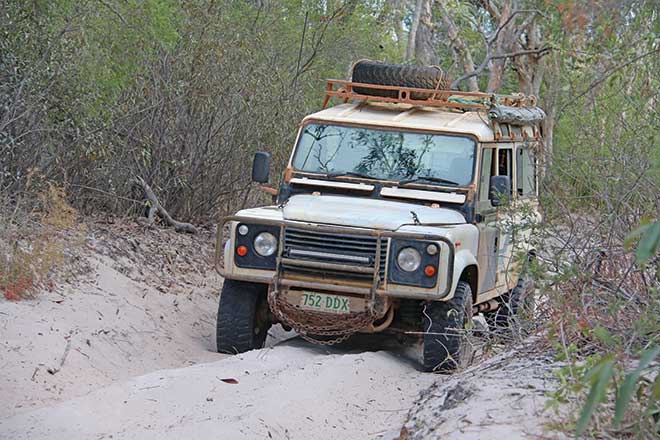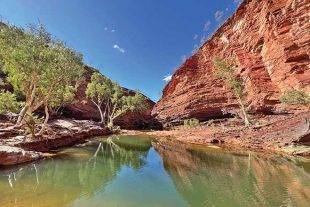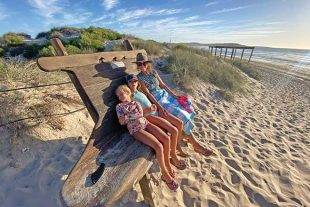Well, what a doozy of a summer we’re having! trip
Cyclones, tropical lows and some of the most intense and widespread thunderstorms on record.
Plus, of course, the cracking heat and humidity.
Overall, this is definitely one of the wildest seasons I’ve seen.
Apparently as a result of sea surface temperatures being considerably above normal around eastern Australia – even though the broader Pacific Basin has been in an El Niño climate pattern… or was.
I am seeing many comments of concern about whether Cape York and the trip to the Tip will be doable this year.
It’s important to understand that torrential rain and flooding is normal for the peninsula each wet season.
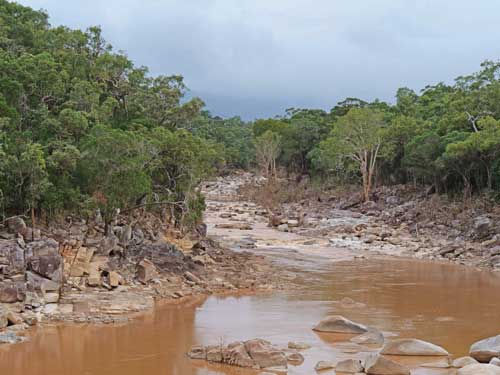
It’s when there’s a failed wet that locals get concerned.
At the time of writing, there had been a good ‘normal’ wet over most of the region and, unless something monumental happens, this dry season is going to be business as normal.
However, speaking of monumental, most readers will be aware that Tropical Cyclone Jasper delivered exceptional rainfall totals between Innisfail, Cairns and the Cooktown area.
Of course, this is the northern part of the Wet Tropics – the wettest part of Australia and where heavy rain is normal.
However, how TC Jasper sat and pumped out rain was something else!
At home, slightly out of Cooktown, I recorded 1.4m of rain in five days, with the rain gauge overflowing a couple of times.
In places, from roughly Black Mountain south to Port Douglas, it was double or more than that and the havoc wreaked was unbelievable.
Friends from down that way told us that they started hearing wild roarings above the sound of the rain, realising the sound was from landslides avalanching down mountain sides, sometimes lasting for 10 minutes.
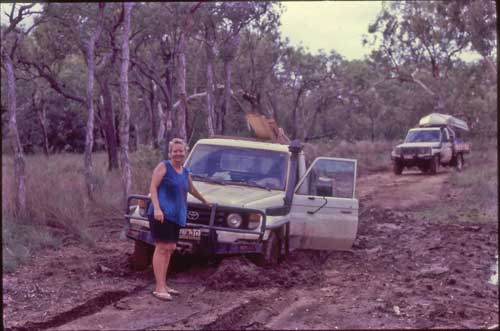
The scars across the landscape indicate that this was a huge and very rare weather event.
While the Cape should be business as usual, the old Cairns Regional Electricity Board track (commonly known as the CREB track) and the southern end of the Bloomfield Track from Cape Tribulation to Wujal Wujal look to be closed for the foreseeable future.
There are so many other priorities to repair.
The other more general questions asked of a ‘trip to the Tip’ are about vehicle modifications such as suspension lifts, tyres and recovery gear, and also sleeping arrangements if you’re not towing something – swags versus tents, versus roof-top tents and such.
Vehicle modifications and requirements
In my experience, if your vehicle already has good ground clearance, a suspension lift really isn’t necessary.
Some of the newer model vehicles with a tray and/or twin cab are on the low side, and a lift may be beneficial.
As I’ve mentioned before, the critical factor is to make sure the suspension is in good condition because it will cop a real flogging.
Sagging springs, old shock absorbers and suspension bushes should all be replaced.
If you’re going hardcore and doing the full Telegraph Track, it’s best that someone in the party has a winch and all the accessories.
Otherwise, everyone should have a tow strap and shackles kept handy, Maxtrax or similar and, of course, a good shovel.
Lots of vehicles suffer alternator and/or starter motor issues through water ingress, so a tarp or ‘water bra’ to put over the front of the vehicle in deep crossings can be a very good idea and save a lot of dramas.
Just make sure any ropes are properly tied off so they can’t wrap around anything.
When it comes to tyres, mud terrain or good all terrain are ideal – with strong sidewalls to minimise staking being the top priority.
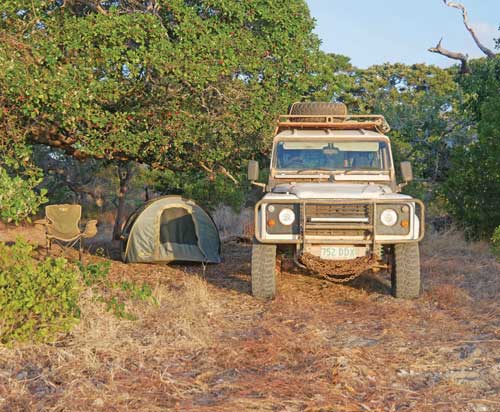
Sleeping arrangements
Well, of course this is largely personal preference, however people are naturally mindful of the crocodiles.
The thing is, if you camp safely back from the water’s edge, as advised on the Department of Environment, Land and Water’s ‘Be Crocwise’ web page – qld.gov.au/environment/plants-animals/animals/living-with/crocodiles/becrocwise – there shouldn’t be a problem whatever you use.
While rooftop tents are a neat way to go, you do have to of course fold them up anytime you want to drive anywhere.
Plus climbing up and down a ladder is not for everyone.
I definitely see their appeal, however they’re not for me.
Swags are great, though remember the insects in the tropics can be overly friendly at times.
So, you really need one with a built-in insect screen or use a mosquito net suspended from a branch, vehicle or similar.
The other option is a tent that you can put your swag and/or bedding and other items in.
This gives you protection from insects and also some privacy.
We’ve used two or three-person pop up tents for years and they very work well, for us.
It takes longer to take them out of the bag than to ‘throw’ them up.
Packing away is easy too, once you learn how – they are a great fast camping solution.
Until next month, stay dry, cool or whatever is needed and keep living the dream!
 Bush 'n Beach Fishing Magazine Location reports & tips for fishing, boating, camping, kayaking, 4WDing in Queensland and Northern NSW
Bush 'n Beach Fishing Magazine Location reports & tips for fishing, boating, camping, kayaking, 4WDing in Queensland and Northern NSW

